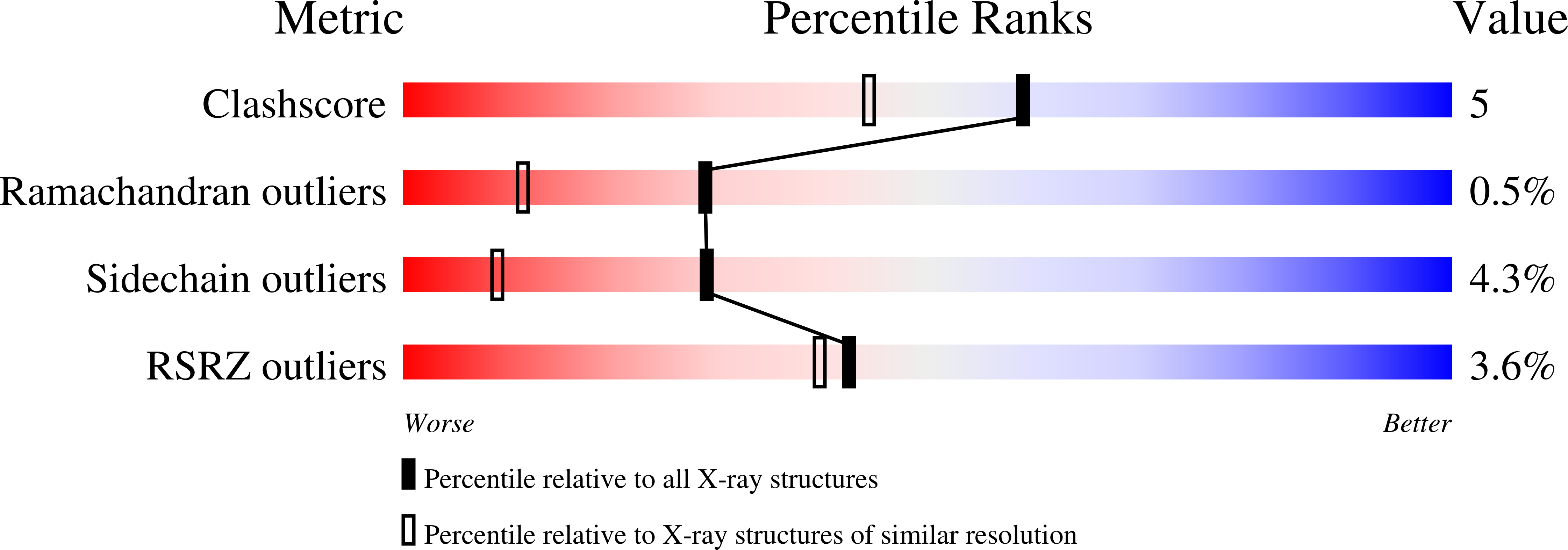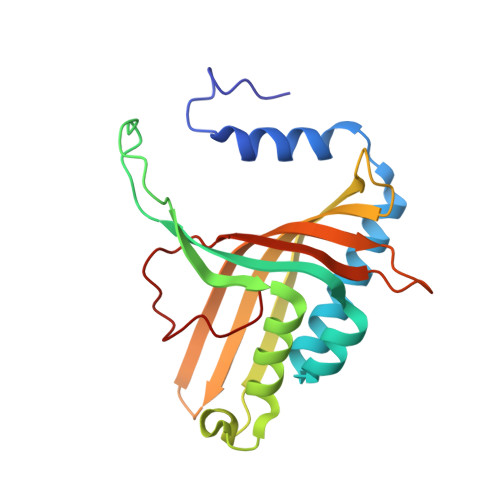Substrate binding site of naphthalene 1,2-dioxygenase: functional implications of indole binding.
Carredano, E., Karlsson, A., Kauppi, B., Choudhury, D., Parales, R.E., Parales, J.V., Lee, K., Gibson, D.T., Eklund, H., Ramaswamy, S.(2000) J Mol Biol 296: 701-712
- PubMed: 10669618
- DOI: https://doi.org/10.1006/jmbi.1999.3462
- Primary Citation of Related Structures:
1EG9 - PubMed Abstract:
The three-dimensional structure of the aromatic hydroxylating enzyme naphthalene dioxygenase (NDO) from Pseudomonas sp. NCIB 9816-4 was recently determined. The refinement of the structure together with cyclic averaging showed that in the active site of the enzyme there is electron density for a flat aromatic compound. This compound appears to be an indole adduct, which in Escherichia coli is derived from tryptophan present in the rich culture medium. An indole-dioxygen adduct has been built which fits the electron density convincingly. Support for this interpretation was obtained from crystals of the enzyme purified from cells grown in the absence of tryptophan which had an empty substrate pocket. These types of crystals were soaked in indole solutions and the position of indole in this complex was similar to the corresponding part in the modelled indole-oxygen adduct. This suggests that a peroxide bound to iron end-on attacks the substrate and forms this intermediate. The substrate position has implications for the substrate specificity of the enzyme. Docking studies with indole, naphthalene and biphenyl inside the substrate pocket of NDO suggest the presence of subpockets where the one close to the active site iron is reserved for the binding of the aromatic ring which is hydroxylated upon catalysis. The plausible location for the binding of dioxygen is between this pocket and the catalytic iron. This is in accordance with the enantiospecificity of the products.
Organizational Affiliation:
Department of Molecular Biology, Swedish University of Agricultural Sciences, Uppsala, S-751 24, Sweden.



















